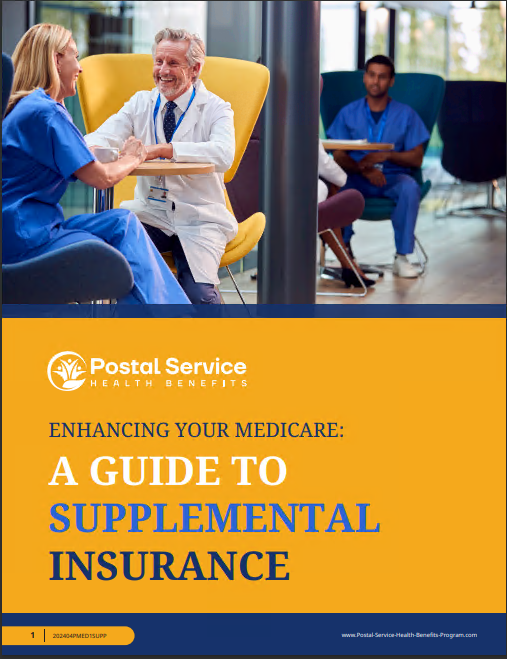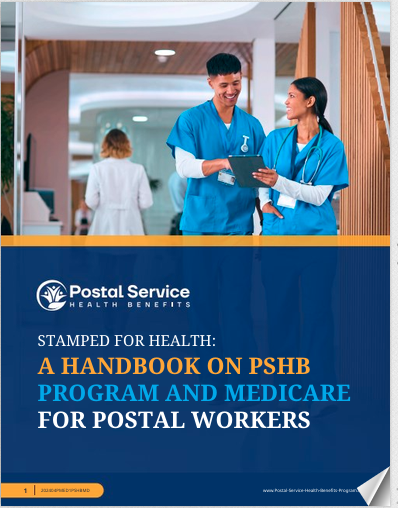Key Takeaways:
- Postal employees need to understand their specific health benefit plans and the steps for filing claims under the Postal Service Health Benefits (PSHB) program in 2025.
- Accurate and timely submission of health benefit claims is crucial for ensuring coverage and minimizing out-of-pocket expenses.
A Step-by-Step Guide for Postal Employees Filing Health Benefit Claims in 2025
As of 2025, postal employees must navigate the new Postal Service Health Benefits (PSHB) program when filing health benefit claims. Understanding the changes and following the correct procedures is essential for ensuring your claims are processed smoothly. This guide will walk you through the necessary steps, from gathering required documentation to following up on submitted claims, helping you maximize your benefits under the PSHB.
Overview of the Postal Service Health Benefits (PSHB) Program
In 2025, the Postal Service Health Benefits (PSHB) program will become the primary health insurance option for postal employees, replacing the Federal Employees Health Benefits (FEHB) program for postal workers. This change stems from the Postal Service Reform Act of 2022, which mandated the establishment of the PSHB program to provide postal employees with tailored health benefits, distinct from other federal employees.
Key Changes in PSHB Compared to FEHB
Under the PSHB program, postal employees will have access to a range of plans specifically designed for their needs. While similar to the FEHB in many ways, the PSHB includes some significant changes:
- Customized Plans: The PSHB offers plans that are more tailored to the specific needs of postal employees, including considerations for their unique occupational health risks.
- Medicare Integration: For retirees, PSHB plans will be integrated with Medicare Part B, meaning that postal retirees who are eligible for Medicare must enroll in Part B to keep their PSHB coverage.
- Cost-Sharing Adjustments: There may be differences in premiums and cost-sharing under PSHB compared to FEHB, so it’s important to review your plan’s specifics carefully.
Understanding these differences is crucial as you prepare to file health benefit claims under the new PSHB program.
Step 1: Understand Your PSHB Plan
The first step in filing a health benefit claim is to thoroughly understand your specific PSHB plan. Each plan under the PSHB may have different coverage details, including what services are covered, the percentage of costs that the plan will pay, and any deductibles or out-of-pocket maximums.
Reviewing Your Summary of Benefits and Coverage (SBC)
Every PSHB plan will provide a Summary of Benefits and Coverage (SBC) document. This is a critical resource that outlines your plan’s coverage details, including:
- Covered Services: A list of medical services and treatments that your plan covers.
- Cost-Sharing Requirements: Information on deductibles, copayments, and coinsurance.
- Exclusions and Limitations: Details on services that are not covered by your plan.
Ensure that you carefully review the SBC for your PSHB plan to avoid unexpected expenses when filing a claim.
Step 2: Gather Required Documentation
Before filing a claim, you need to gather all the necessary documentation. Proper documentation ensures that your claim is processed without delays or rejections.
Required Documents for Filing a Health Benefit Claim
The following documents are typically required when filing a health benefit claim under the PSHB:
- Medical Bills and Receipts: These should include detailed information about the services provided, including the date of service, provider name, and the cost of services.
- Explanation of Benefits (EOB): If your service provider has already submitted a claim, you should receive an EOB from your insurance plan, which outlines what portion of the claim was covered and what you may owe.
- Physician’s Referral or Prescription: If your claim involves services that require a referral or prescription, such as specialist visits or medications, include these documents.
Importance of Accurate and Complete Documentation
Incomplete or inaccurate documentation is one of the most common reasons for claim denials. Double-check all forms and documents for accuracy before submission. Make sure that the services billed match those listed in your PSHB plan’s covered services, and that all required information is provided.
Step 3: Submit Your Health Benefit Claim
Once you have gathered all necessary documentation, the next step is to submit your health benefit claim. The process for submitting a claim can vary depending on whether your healthcare provider is in-network or out-of-network.
Filing In-Network Claims
For in-network providers, the claims process is usually straightforward. Your healthcare provider will typically submit the claim directly to your PSHB plan. However, it’s still important to verify that the claim has been submitted and processed correctly.
- Check Submission Status: After your provider submits the claim, check the status through your plan’s online portal or by contacting customer service.
- Follow Up: If the claim is not processed within the expected time frame, follow up with your provider or your PSHB plan to ensure there are no issues.
Filing Out-of-Network Claims
For out-of-network providers, you may need to submit the claim yourself. This involves completing a claim form and attaching all required documentation.
- Obtain a Claim Form: Download the claim form from your PSHB plan’s website or request one from customer service.
- Complete the Form: Provide all required information, including your personal details, plan information, and details about the medical service received.
- Submit the Claim: Mail the completed form and supporting documents to the address provided on the form. Some plans may also allow for electronic submission.
Claim Submission Deadlines
Most health insurance plans, including those under the PSHB, have specific deadlines for submitting claims. These deadlines can vary but are typically within 90 to 180 days from the date of service. Missing these deadlines could result in your claim being denied, so it’s important to file your claim promptly.
Step 4: Monitor and Follow Up on Your Claim
After submitting your claim, it’s important to monitor its status and follow up if necessary.
Checking Claim Status
You can check the status of your claim through your PSHB plan’s online portal or by contacting customer service. Be prepared to provide your claim number or other identifying information.
Responding to Denied or Partially Paid Claims
If your claim is denied or only partially paid, review the reason provided by your PSHB plan. Common reasons for denial include:
- Incomplete Documentation: Missing or incorrect information can lead to a claim denial.
- Non-Covered Services: Services that are not covered under your plan may be denied.
- Out-of-Network Services: Claims for out-of-network services may be denied if your plan requires prior authorization.
If your claim is denied, you have the right to appeal the decision. The appeals process typically involves submitting additional documentation or a letter explaining why the service should be covered. Be sure to follow the specific instructions provided by your PSHB plan for filing an appeal.
Step 5: Keep Records of Your Claims
Maintaining accurate records of all your health benefit claims is essential. Keeping a record of your claims helps you:
- Track Your Out-of-Pocket Expenses: Understanding how much you have paid out-of-pocket can help you manage your healthcare budget.
- Prepare for Future Claims: Having a record of previous claims can make it easier to file future claims, especially if similar services are required.
Organizing Your Records
Consider setting up a filing system, either physical or digital, to keep track of your health benefit claims. Include:
- Copies of Submitted Claims: Keep copies of all claim forms and supporting documentation.
- EOBs: Store all Explanation of Benefits statements in one place for easy reference.
- Correspondence: Keep records of any correspondence with your PSHB plan, including emails and letters.
Staying Informed About Your PSHB Plan
As the PSHB program is new for 2025, it’s important to stay informed about any updates or changes to your plan. Regularly reviewing communications from your plan provider, attending informational sessions, and checking the official PSHB website can help you stay on top of any developments that might affect your coverage or the claims process.
Moving Forward with Confidence in 2025
Filing health benefit claims under the new Postal Service Health Benefits program may seem daunting, but by following these steps, you can ensure that your claims are processed smoothly. Understanding your plan, gathering the necessary documentation, submitting claims promptly, and keeping detailed records are all key to maximizing your benefits and minimizing out-of-pocket costs in 2025.
Contact Information:
Email: [email protected]
Phone: 4805557890







